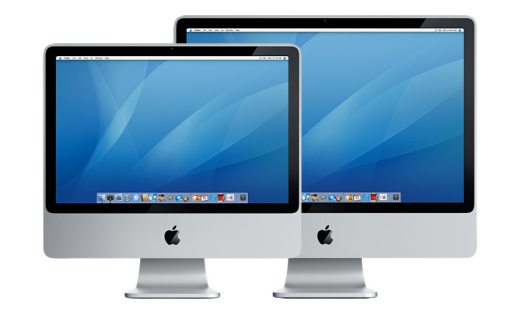Apple's stealth campaign for business?

Passing over the new iMac hardware and the refreshed software suites introduced on Tuesday down at Apple's campus in Cupertino, my attention was grabbed by the company's apparent new definition for a business machine.

This arrangement corresponds to the longstanding market segment divisions that Apple has followed since 1999: the company will offer a set of desktop and notebook systems for professional users and another set for consumers.
Some of the differences between the lines are performance related: faster processors or more processors on the pro models. Or support for more memory.
Other obvious differences were external: the pro lines came with brushed aluminum enclosures and the consumer lines were plastic. As we remember in the first rounds of iMacs, the plastic covers were really plastic and colorful. Friendly Macs for kids.
However, many of these distinctions appear to be breaking down with the new iMacs. The new machines are sleek and shiny, using aluminum enclosures, formerly the mark of the pro line. The iMacs come with Intel Core2 Duo running processors up to 2.8GHz and support 4GB of RAM.
Certainly, I can easily picture one of these new iMacs on an executive desktop. They look great coming and going, unlike almost all other computers on the market. In the presentation, Jobs called one bundle the "CTO version." Now, that's a far cry from the audience for the Blue Dalmatian and Flower Power iMacs of bygone years.
Apple's new iMac pitch appears to be that business users are now discovering content and the need for more performance and quality in a client machine. Of course, Apple also provides the software that can make a difference in a presentation or sales pitch. For example, the refreshed Keynote continues to be the best presentation tool on the market.
"Don't discount that businesses more and more are becoming communications-oriented. So a lot more people in business than before have to sell internally [and] they're excited to have the tools to do that. You're seeing movies used to sell internally [in companies]. These tools are useful in business and the iMac is having some traction in business," Jobs said in a Q&A session following his presentation.
I've seen this business traction in action. I know a technical sales manager at an ERP company who has used a PC his whole career. What else, right?
But earlier this year he said he got sick of the PC (and yes, he runs Vista). The guy bought an Intel iMac and raves about it. He uses Parallels when he needs something from the Windows side.
Recently, he bought another iMac for his wife, who's a software programmer. And he says he's looking at a MacBook for when he's on the road. Talk about switchers.
Apple also may be readying a message about quality and commoditization. Jobs said in the Q&A that Apple doesn't "offer stripped-down, lousy products."
"Some of the stuff in our industry we wouldn't be proud to ship to recommend to our families and friends. We just can't ship junk....We think there's a significant share of the industry that wants that too," Jobs said.
But if the once-consumer iMacs and MacBooks aren't so consumer any more, where does that leave Apple's "professional" lines?
For the desktop, the pro designation obviously means a multiprocessor workstation. This makes sense for Apple's base doing professional content creation tasks or crunching visualizations for sci-tech apps.
However, this trend makes the notebook differentiation look fuzzy. In the value department there's not much difference between a MacBook and a MacBook Pro.
A year ago, I went with a MacBook Pro for its ExpressCard/34 slot so I could attach a eSATA storage array. That slot doesn't seem to be enough of a difference for a wider audience.
Jobs reiterated again in the Q&A, albeit talking about software, that he won't protect a higher-end line by keeping away obvious features or capabilities from Apple's low end products.
The questions keep piling up about the next-generation MacBook Pros. Maybe they will go with a retro plastic case, just for fun.